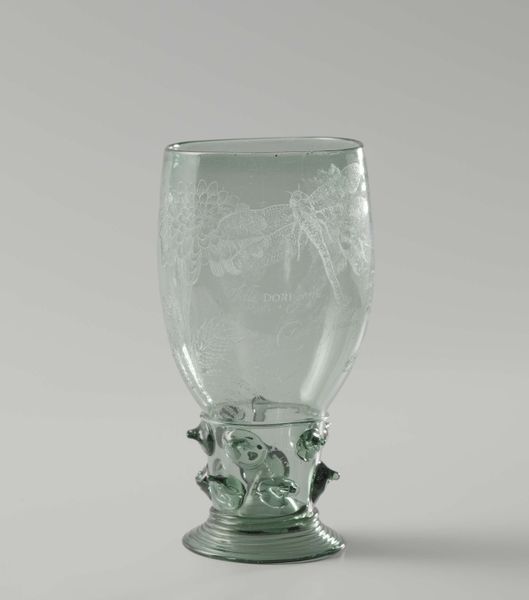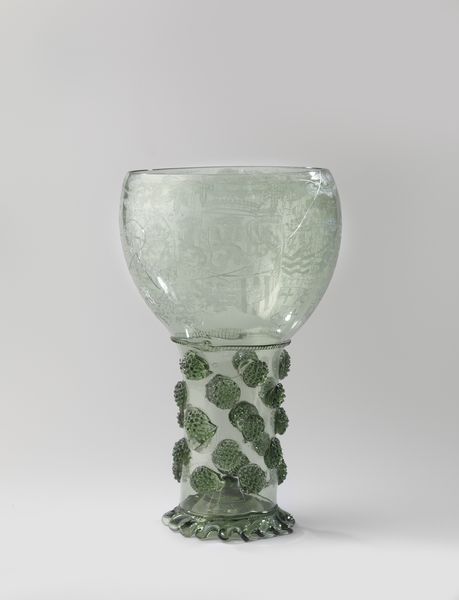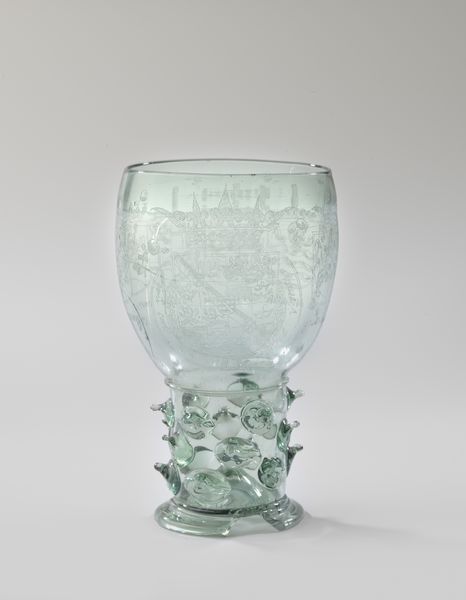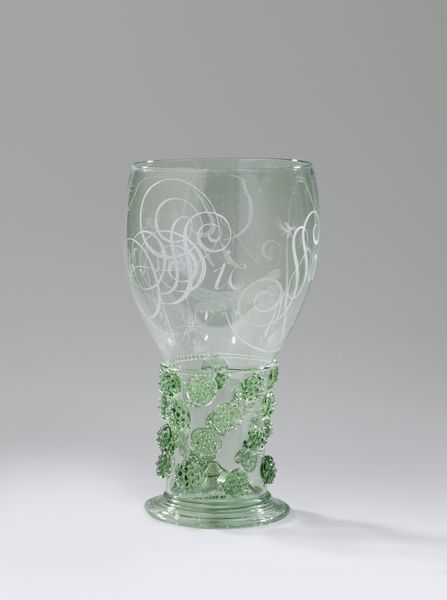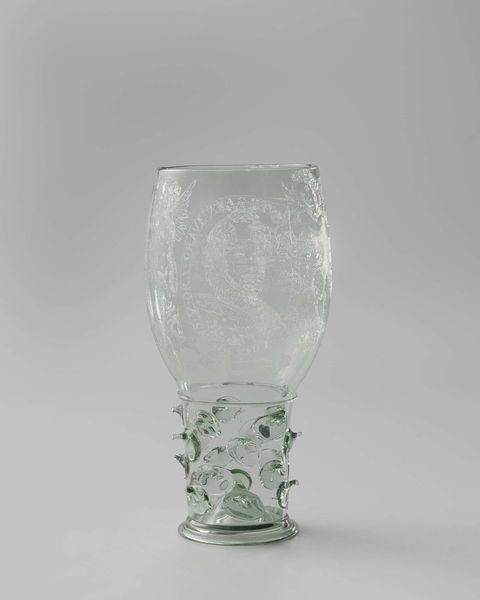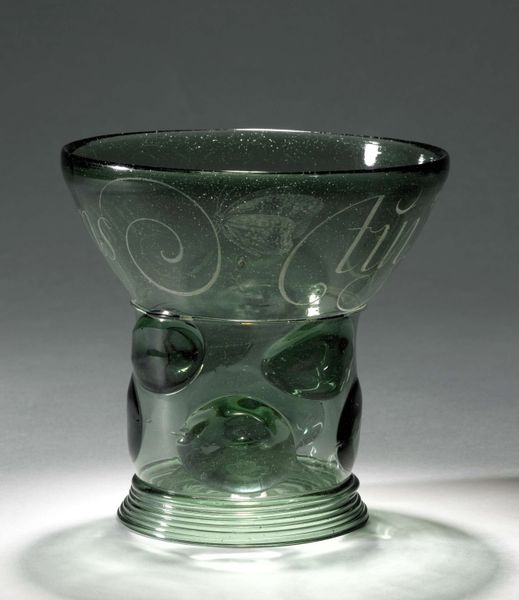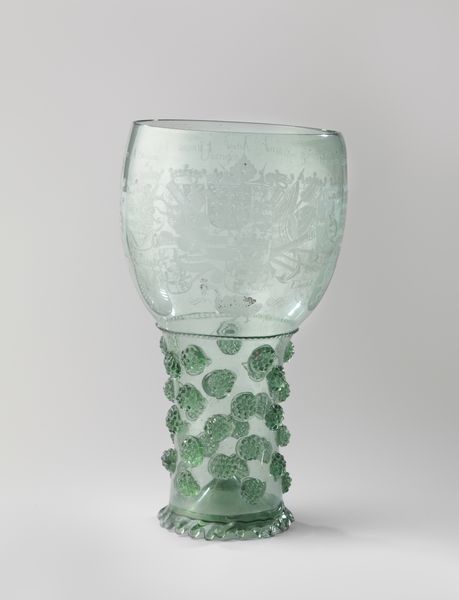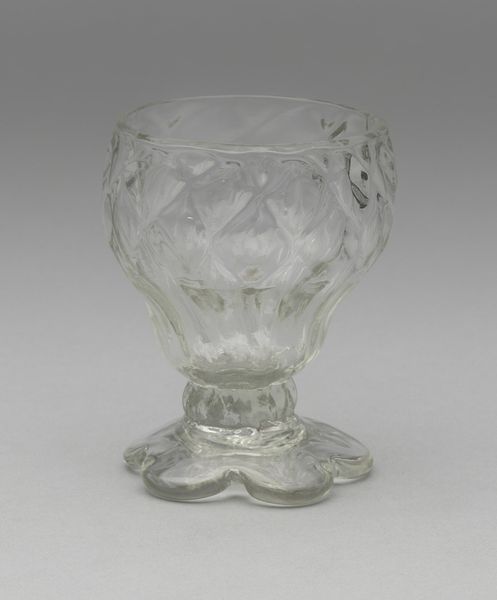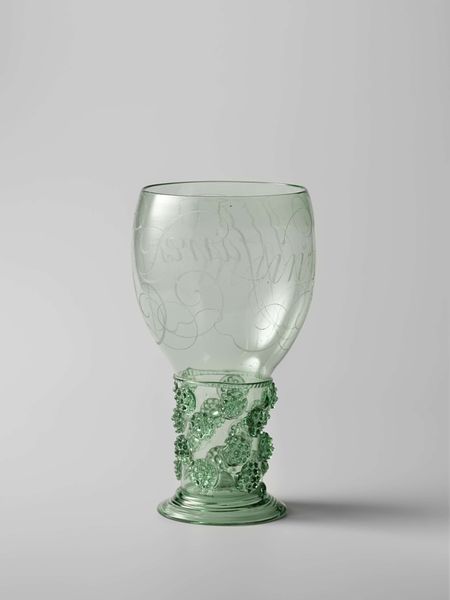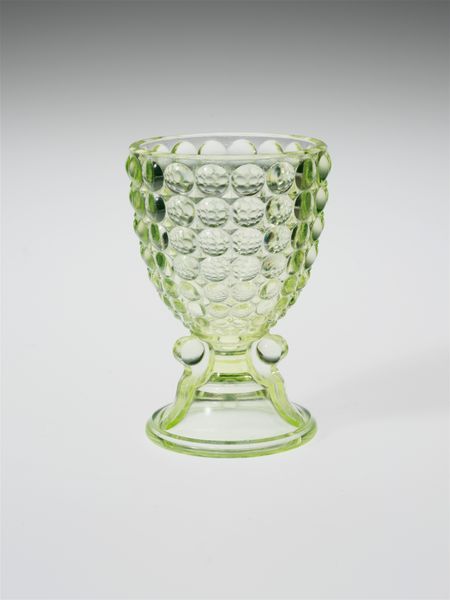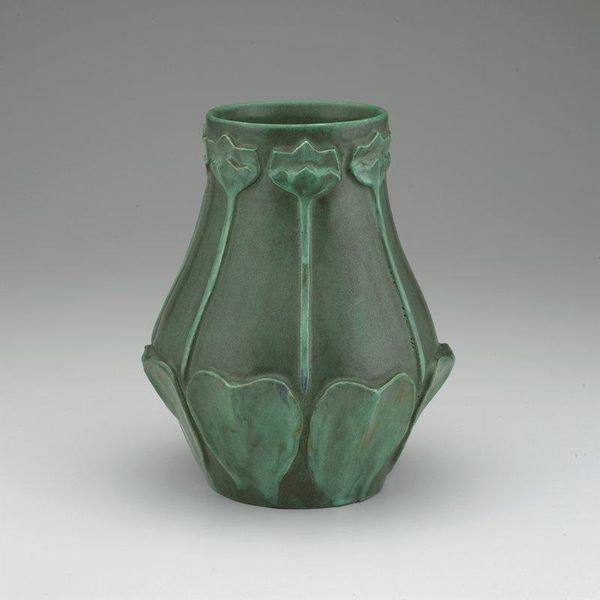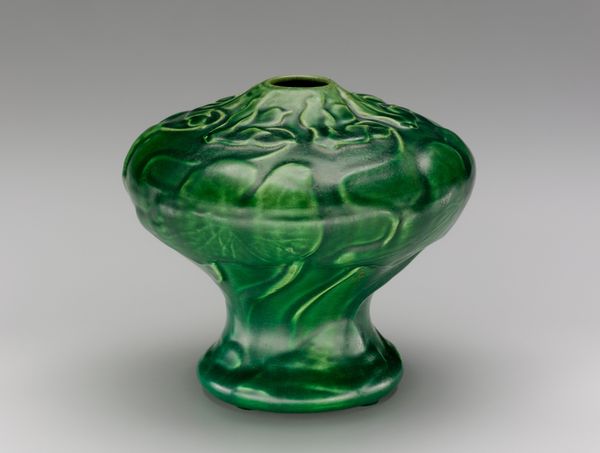
glass
#
baroque
#
glass
#
stoneware
#
ceramic
#
decorative-art
Dimensions: height 11.1 cm, diameter 9.0 cm
Copyright: Rijks Museum: Open Domain
Curator: Here we have a Roemer, or a type of drinking glass, dating back to 1606. This particular example is adorned with the arms and motto of Prince Maurice of Orange. Editor: There’s an almost unsettling serenity to its design. The subdued green, the symmetrical engravings, and the weighty-looking base create an impression of austere functionality. Curator: Precisely. Let's look at the form itself. The conical bowl flares outward from a cylindrical stem decorated with prunts—those small, applied blobs of glass—and rests on a spreading foot. This particular Roemer showcases meticulous glassblowing and delicate engraving. Editor: The prunts! Those are what give away that the glass blower and engraver were skilled craftspeople. Imagine holding this. The contrast between the smoothness of the bowl and the bumpy texture of the prunts provides a tactile and engaging experience for the user. Curator: It would also be worthwhile to discuss the cultural function of an object such as this one. Editor: In what way? The object transcends simple functionality; each detail reflects production, taste, and consumption within a specific context. How was it traded? Who actually enjoyed its aesthetic appeal? Curator: Very true! The depiction of Prince Maurice signifies its association with power, status, and political allegiance in the Netherlands at that time. That must also have impacted the social settings of its use. The coat of arms and motto are clear status symbols. Editor: That adds to my understanding. As a drinking vessel made of glass, the skill in production highlights artisanal production, social status, and consumption habits of 17th-century Europe. Curator: Seeing it from your perspective gives another glimpse into its historical usage and symbolic weight. Editor: And for me, it makes a Baroque artwork into something less cold. Thanks to formalist examination, it has a symbolic depth that extends beyond pure material craft!
Comments
rijksmuseum about 2 years ago
⋮
The barren, chopped-down tree engraved on the glass stands for Maurice’s assassinated father, William of Orange. Sprouting from another stump are two twigs: Maurice and his younger brother, Frederick Henry. Maurice’s motto (Tandem fit surculus arbor) reads in translation: ‘In time, the (off)shoot becomes a tree.’ By 1606, when this glass was engraved, Maurice had already racked up many military successes.
Join the conversation
Join millions of artists and users on Artera today and experience the ultimate creative platform.
